When the modern typewriter collector looks back on the habits of the breed over time, he notices that up until the turn of the 21st Century, collectors had zero interest in machines made later than World War 2, and in many cases had little interest in machines newer than about 1930. I have a theory that this is due to simple entrophy – typewriter collecting began well before typewriters became an obsolete mechanical device, and so collectors in say the 1940’s or the 1960’s had no use (and more on the term “use” later) for machines of designs that were still being made in their time. This attitude prevailed even after typewriters were supplanted from the market by computers, and serious collectors often even now have little use for post-war machines, despite the interesting fact that the very end of typewriter production saw just as many weird and wonderful design idiosyncrasies as machines from the late 1800’s due to rapidly advancing technologies and manufacturer’s desperate attempts to keep the typewriter relevant in the 1980’s.
Perhaps this was a symptom of the fact that most of those old-style collectors really weren’t interested in *using* their machines so much as displaying them, as you might imagine that actually using antique machines of weird design was difficult and probably un-fun. By not having a *use* for the relics, there would be little motivation to appreciate and desire more modern machines (as we do) for their delightful functionality. Thus, a whole era of interesting design passed right under the noses of the collectors of the 1980’s without even being noticed. Maybe that’s why we know so little about the most modern machines today?
Anyway, here’s an interesting article from young Miss Marlis Dean in 1969’s edition of “The Western Collector” catalog:
(I should note here that Marlis seems to have sourced all of her period advertisements from the Western Collector‘s archive of “The Home Magazine” of the late 1800’s, so there’s a good possibility that some of the advertisements reproduced here will be of interest to those researching truly antique machines.)
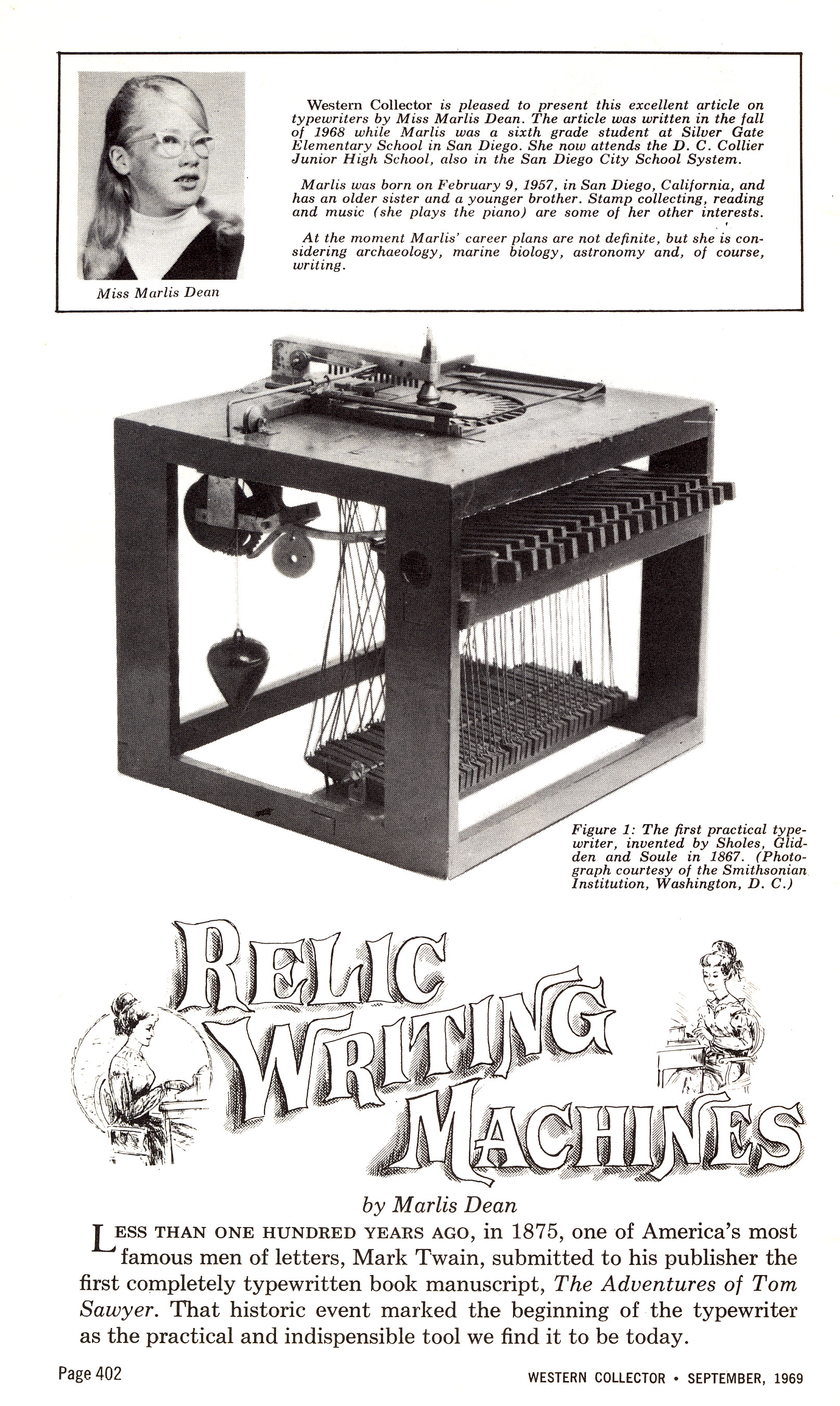
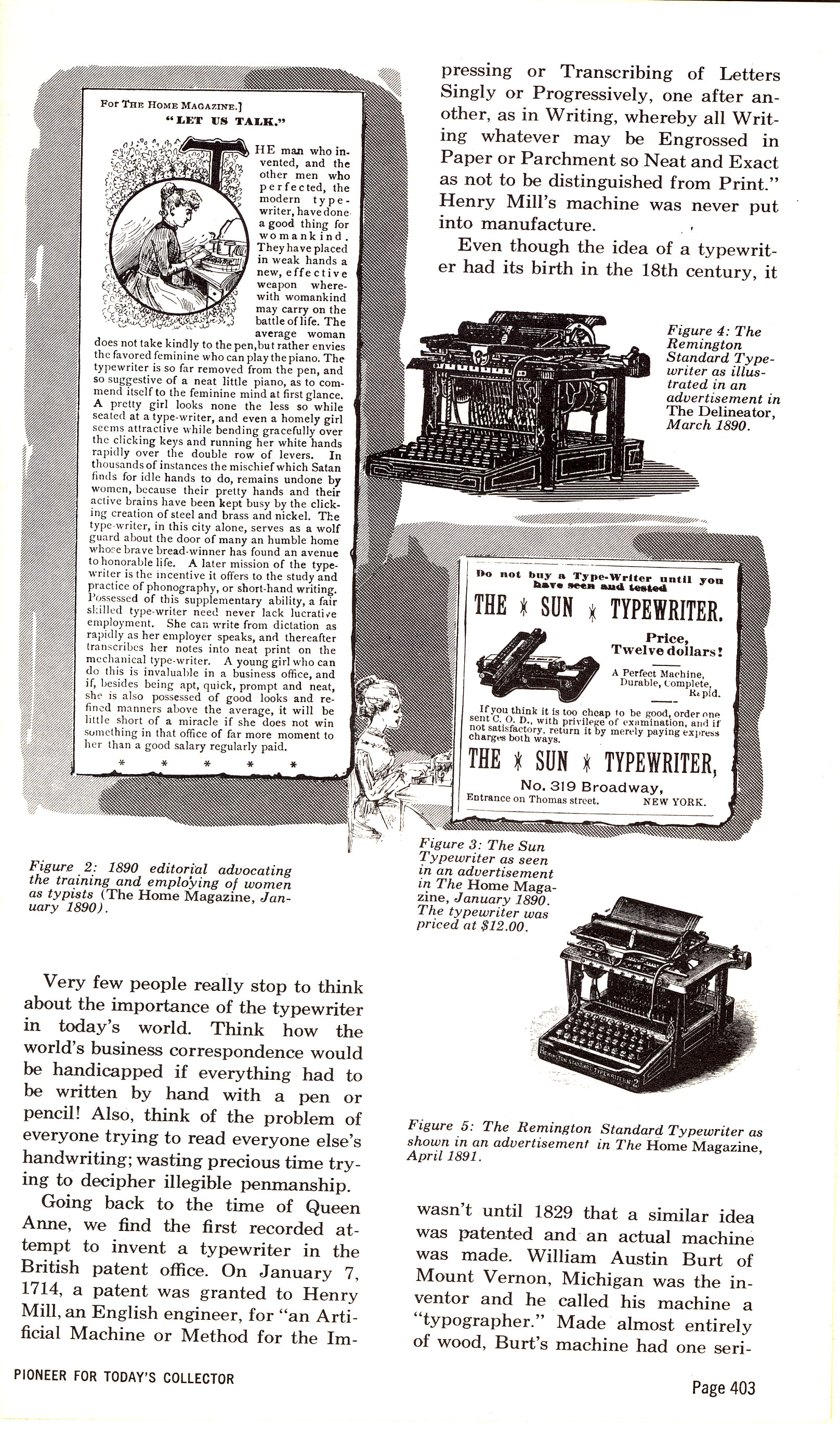
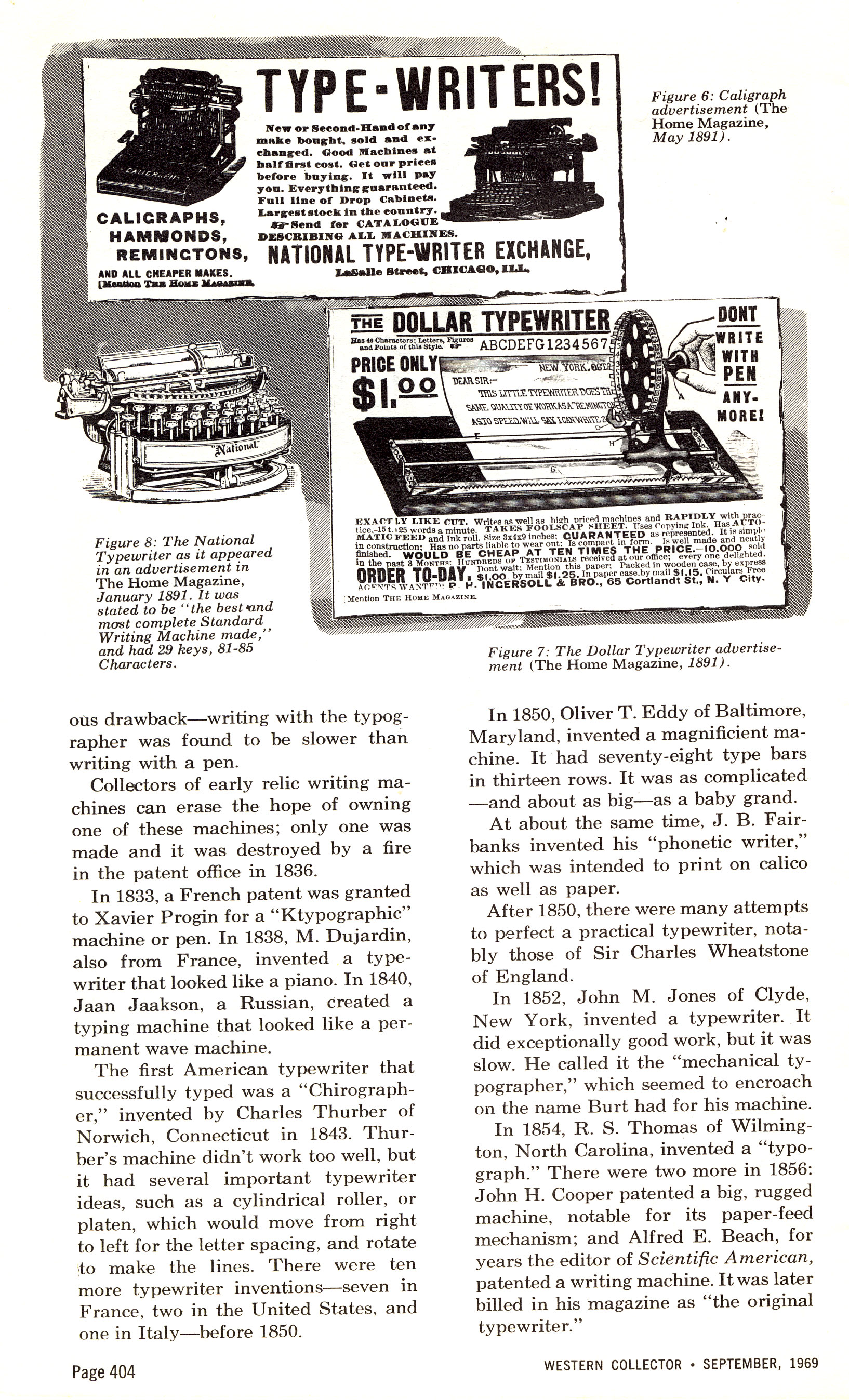
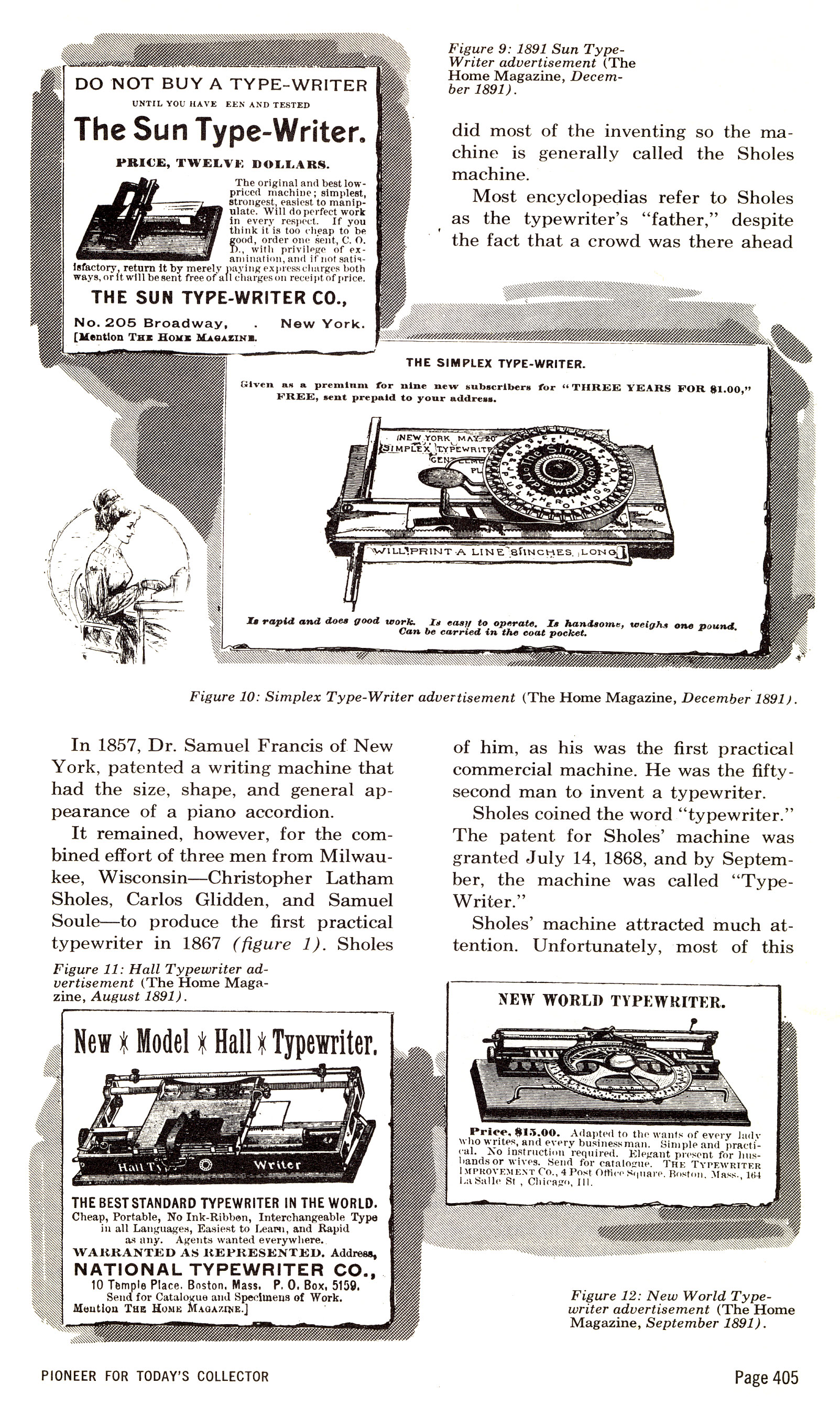
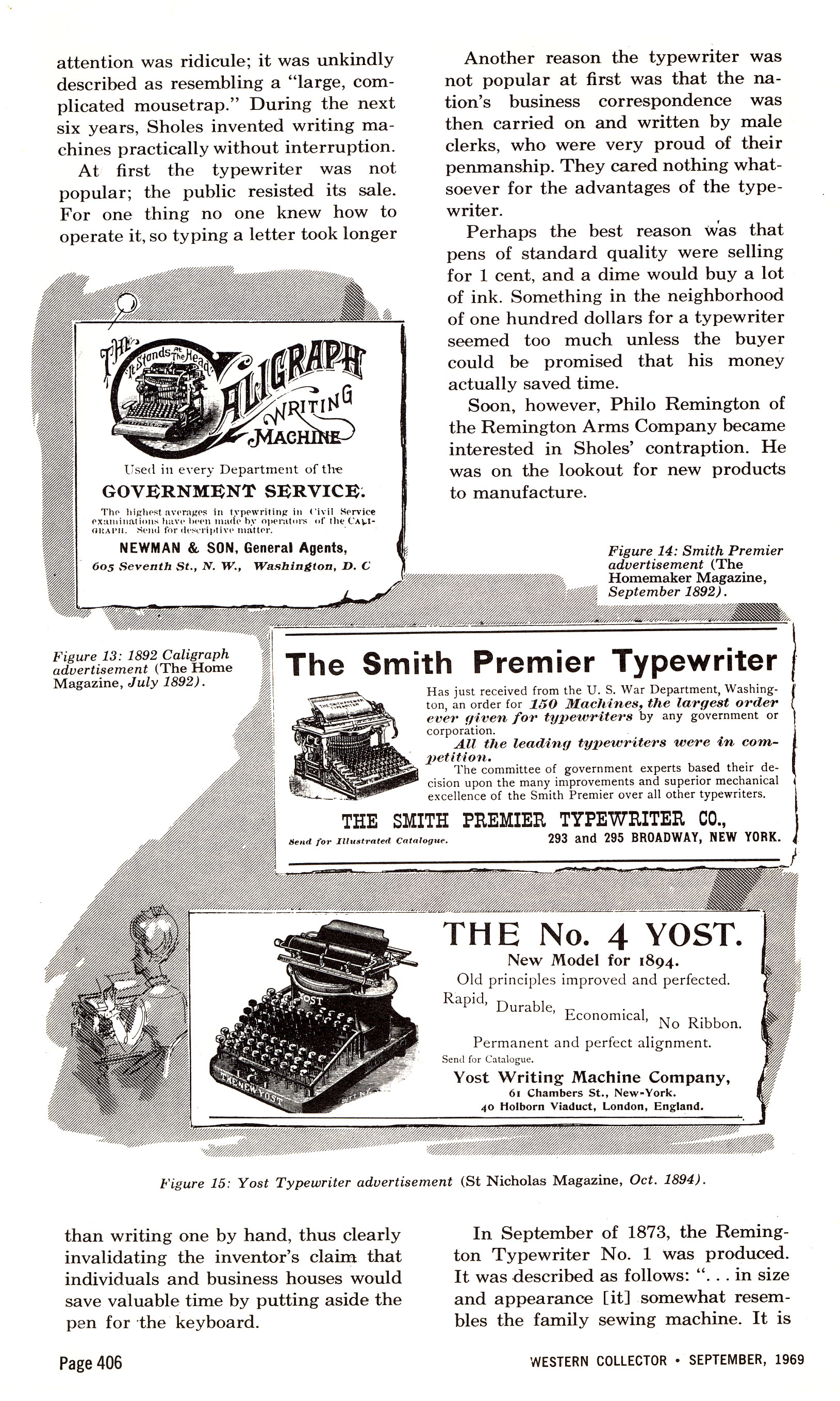
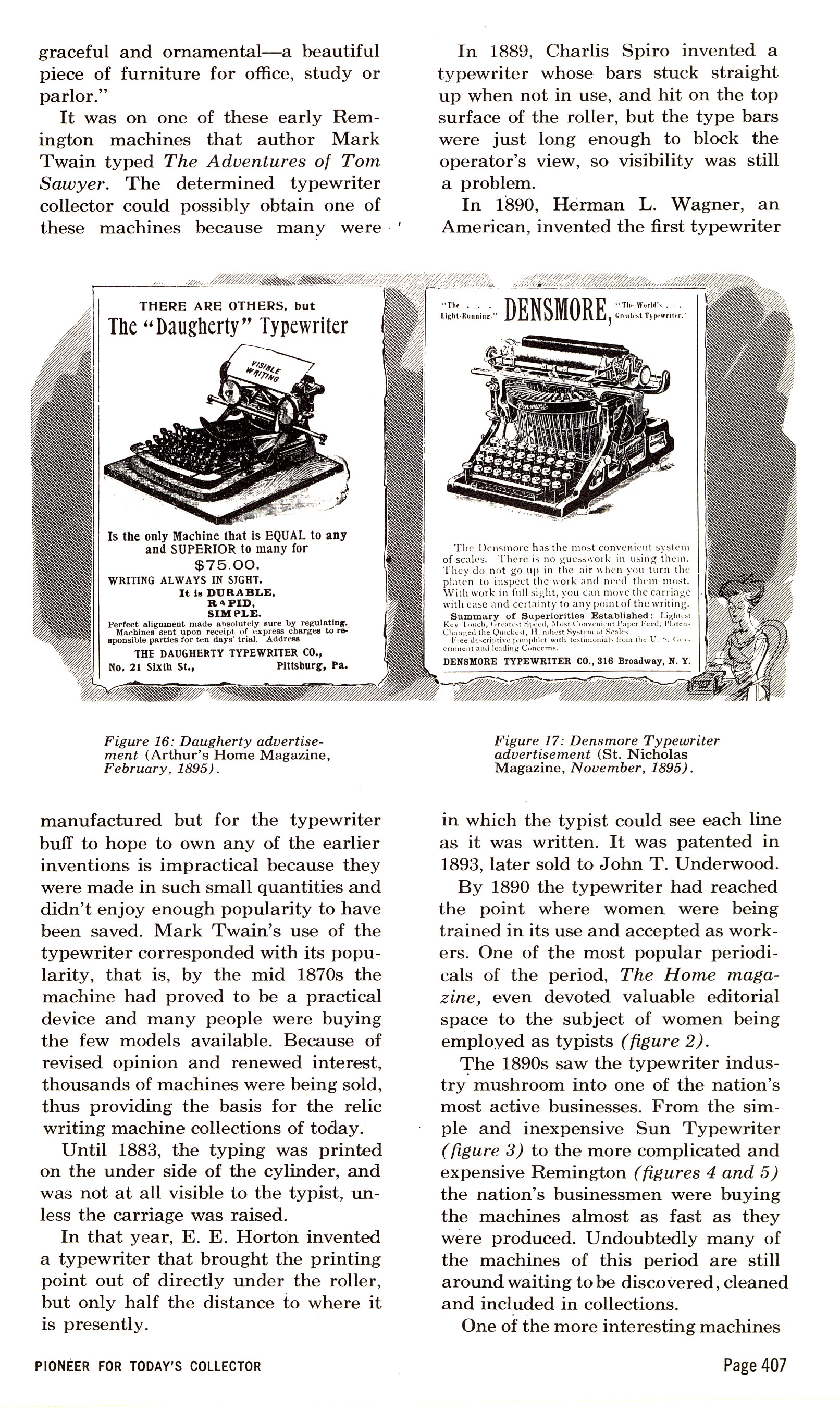

Wow – Marlis! Fascinating post – fascinating article.
I have questions: 1) Did Marlis become an archaeologist or marine biologist or astronomer or writer? 2) is it too late to rename my blog “My Relic Writing Machines”?
ok here we go with the scary “internet knows everything” stuff. Google-fu says Marlis Dean graduated from Point Loma High School in 1975, and married, last name now Saleh. Moved to Chicago and as of 2011 is Bibliographer for Middle East Studies at the University of Chicago Library. She appears to be something of a star in that field and travels extensively in the Middle East procuring materials for the Library’s collection. Photo on her office wall at UCL suggests 3 children.
You are so much better at talking to the Google than I am. Marlis looks like she’s having a great time in life – she is my hero.
I’d say the promising young writer/researcher really did appear to fulfill the promise. :D